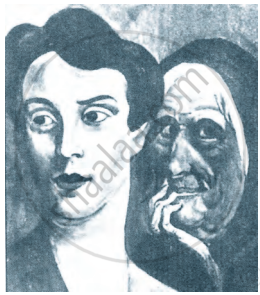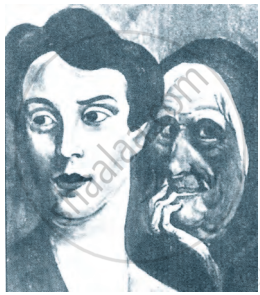Advertisements
Advertisements
प्रश्न
What is meant by structured personality tests? Which are the two most widely used structured personality tests?
उत्तर
Self-report measures is fairly structured personality test. This was used by Allport who suggested that the best method to assess a person is by asking her/him about herself/himself. This led to the use of self-report measures. These are fairly structured measures, often based on theory, that require subjects to give verbal responses using some kind of rating scale. The method requires the subject to objectively report her/his own feelings with respect to various items. The responses are accepted at their face value. They are scored in quantitative terms and interpreted on the basis of norms developed for the test.
The two most widely used structured personality tests are:-
1. The Minnesota Multiphasic Personality Inventory (MMPI) :- This inventory is widely used as a test in personality assessment. Hathaway and McKinley developed this test as a helping tool for psychiatric diagnosis, but the test has been found very effective in identifying varieties of psychopathology. Its revised version is available as MMPI-2. It consists of 567 statements. The subject has to judge each statement as ‘true’ or ‘false’ for her/him. The test is divided into 10 subscales, which seek to diagnose hypochondriasis, depression, hysteria, psychopathic deviate, masculinity-femininity, paranoia, psychasthenia, schizophrenia, mania and social introversion. In India, Mallick and Joshi have developed the Jodhpur Multiphasic Personality Inventory (JMPI) along the lines of MMPI.
2. Eysenck Personality Questionnaire (EPQ) :- Developed by Eysenck this test initially assessed two dimensions of personality, called introverted-extraverted and emotionally stable-emotionally unstable. These dimensions are characterised by 32 personality traits. Later on, Eysenck added a third dimension, called psychoticism. It is linked to psychopathology that represents a lack of feeling for others, a tough manner of interacting with people, and a tendency to defy social conventions. A person scoring high on this dimension tends to be hostile, egocentric, and antisocial. This test is also widely used.
APPEARS IN
संबंधित प्रश्न
Discuss the main observational methods used in personality assessment. What problems do we face in using these methods?
Explain how projective techniques assess personality. Which projective tests of personality are widely used by psychologists?
The school counsellor told Simran that people are happiest and perform their best when their personal traits and characteristics match their occupation. To assess this, she has to go through a psychological test. Her counsellor is most likely to use the ______ test.
A teacher might assume that a well-behaved student is also bright and motivated before they have objectively evaluated the student's capacity in these areas. Identify the phenomenon.
The Minnesota Multiphasic Personality Inventory helps to diagnose ______.
- Neuroticism, psychoticism
- Sociability, PTSD
- Psychasthenia, schizophrenia
- Paranoia, depression
Choose the correct option.
Two statements are given in the question below as Assertion (A) and Reasoning (R).
Assertion (A): Behavioral ratings suffer from major limitations like acquiescence.
Reason (R): Raters have a tendency to place individuals in the middle of a scale by avoiding extreme positions.
Refer to the picture given below and answer the question by choosing the most appropriate option:

Which type of personality assessment is being depicted in the above picture?
Refer to the picture given below and answer the question by choosing the most appropriate option:

Which of the following is NOT a characteristic of this test?
Refer to the picture given below and answer the question by choosing the most appropriate option:

Which of the following is NOT a drawback of this test?
Refer to the picture given below and answer the question by choosing the most appropriate option:

Identify the stimuli that are used in such kinds of tests as given in the above picture.
If an individual is fat, soft and round along with a temperament that is relaxed and sociable, then he/she is said to have the characteristics of an ______.
Which of the following is a projective technique for assessing personality?
The Thematic Apperception Test (TAT) was developed by ____________.
Which one of the following statement would be true in the above context?
Psychologists who follow the Freudian theories of personality are most likely to use ______ for personality assessment.
The personality assessment technique that is commonly used to gather data from people who know the client very well is ______.
The process of blocking or thwarting needs causes frustration in human beings.
The emotions of the child during the infancy are
The most important scale for the measurement of psychological traits is ______
Which technique is used by T.A.T.?
Who used ink-block test first?
The study of family relations is the object of ______
PF study is the part of ______
The term multi-dimensional is related to ______
How many objects are there on the "Minnesota personality scale"?
At which stage a child learn to control the bodily functions of urination and defection.
Which of the following is most widely used as projective techniques?
Dismissing anxiety provoking behaviours or thoughts from unconscious is known as
The Thematic Apperception Test (TAT) was developed by ______.
Explain the characteristics of indirect techniques that are used to assess personality. Describe any two such tests.
Why is behavioural analysis conducted to overcome stress?
- To find malfunctioning behaviour.
- To find the consequent operations of the adaptive behaviour.
- To identify the antecedents of faulty learning.
- To identify factors that maintain faulty learning.
